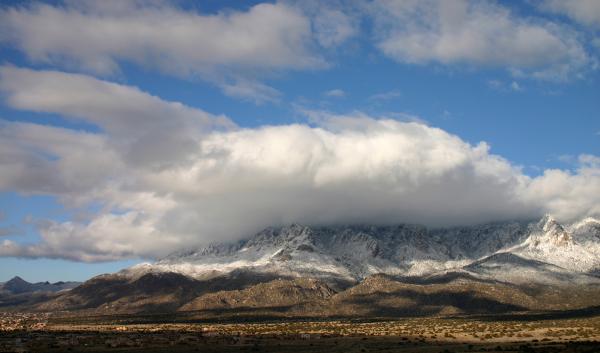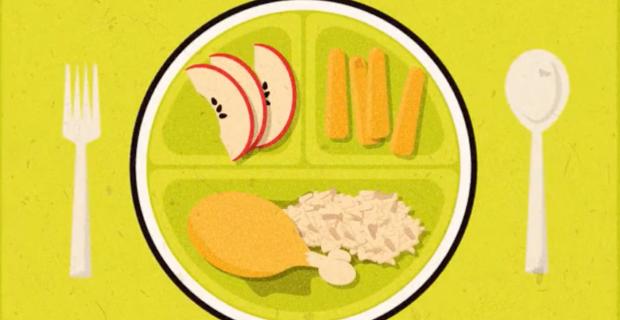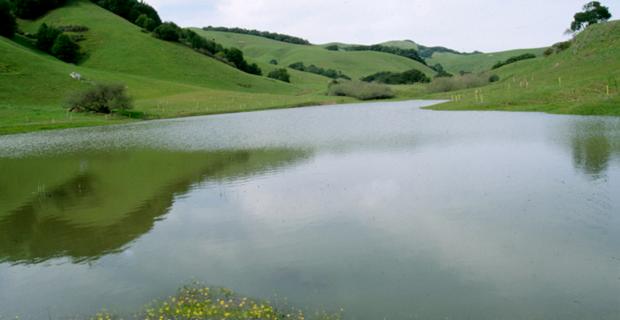The Center for Ecoliteracy Inspires a School Food Reform Initiative in New Mexico

In February 2011, a monster snowstorm wreaked havoc with sub-zero temperatures and relentless winds across some 30 states.
In New Mexico, a historic deep freeze set in, and natural gas ran out, forcing tens of thousands of people to endure bone-chilling cold. The governor shut down all institutions and declared a state of emergency. So when Center for Ecoliteracy executive director Zenobia Barlow took the stage for a special lecture in Albuquerque, she was understandably surprised to see a packed house.
Barlow's talk, sponsored by the Robert Wood Johnson Foundation Center for Health Policy at the University of New Mexico, stressed the importance of viewing food-related issues from a systems perspective and shifting from seeking a single "right" answer to appreciating ambiguity. She depicted health as more than a phenomenon affecting individuals, given that ethnicity and zip code can often predict life expectancy and health outcomes. She urged the audience to work at multiple levels of scale: top down, bottom up, outside in, inside out. And she presented the Center for Ecoliteracy's Rethinking School Lunch (RSL) framework, which applies these ideas to help transform K–12 school food systems.
In fact, RSL was making an impact well before Barlow's visit. In 2009, Janet Page-Reeves, an anthropologist at the University of New Mexico's Prevention Research Center, was concocting her own school food reform initiative when she discovered the Rethinking School Lunch Guide on the Center for Ecoliteracy's website. "It's a coherent framework that brings 'different' elements like education, gardening, and school food together in a meaningful way," she says. "I come from a background in food systems, poverty, and hunger. I had already figured out that there are a lot of 'silos' when it comes to these issues. When you de-silo everything, you realize how much momentum there actually is to move forward. If we can harness that enthusiasm in a strategic and coordinated way, we can work collaboratively to improve the health of our kids. "
There is a heightened sense of urgency to do so in New Mexico, which has one of the nation's highest poverty rates. Six years ago, the USDA ranked the state #1 for food insecurity. While it moved down to #12 in 2011, one in every four children still do not know where they will get their next meal. A 2010 study by the New Mexico Association of Food Banks and Feeding America found that 40 percent of the members of households seeking food assistance each week were under the age of 18.
Access to healthy, affordable food is an ongoing challenge. "New Mexico is a rural frontier state," notes Page-Reeves. "The population is very dispersed, and you have to drive far to get to a retail store." The New Mexico Collaboration to End Hunger estimates that the average resident travels 29 minutes each way to a grocery store, many of which are convenience stores with little or no refrigeration—and higher prices than stores in larger cities.
Childhood obesity is also a significant problem. A New Mexico Department of Health study found that 13.2 percent of kindergarten and 22.6 percent of third-grade students qualify as "obese" (compared to a national obesity rate of 19.6 percent for 6- to 11-year-olds). Along with poverty and food insecurity, obesity disproportionately affects the state's rural and minority populations. The prevalence of obesity among American Indian kindergarten children, for example, is almost three times that of white, nonHispanic children and almost twice that of Hispanic children.
Page-Reeves set out to mobilize proponents of school food reform to create an RSL-inspired initiative called "School Outside the Box." She secured the support of influential leaders, including Jennie McCary, wellness manager of Albuquerque Public Schools (APS) at the time. But "School Outside the Box" ultimately stalled. Disappointed but undeterred, Page-Reeves presented the Robert Wood Johnson Foundation Center with a proposal: Bring the Center for Ecoliteracy to New Mexico.
Barlow arrived in February 2011—and wherever she went, people showed up. Following her public talk, she attended a dinner for school food leaders. "There was no agenda," Page-Reeves recalls. "The objective was relationship building. We wanted the food service folks to understand that we respect them, we aren't always trying to advocate 'at' them, and we recognize that they work hard to provide good food for kids."
The next day, participants in a community meeting hosted by Barlow voted unanimously to continue the discussion and determine next steps. "It was difficult to even get your car to start, but we got a huge turnout!" marvels Page-Reeves. "Everyone felt that we needed to unite around these issues. We just needed a catalyst like Zenobia to get things moving." A "visioning" meeting was planned, and six organizations, including the New Mexico Collaboration to End Hunger; Farm to Table; ACHIEVE (Action Communities for Health, Innovation, and EnVironmental changE); and Albuquerque Public Schools Growing Gardens Team, agreed to collaborate.
And so "Rethinking School Lunch New Mexico" was born.
Since then, the "vision" has become clearer, thanks in part to an RSL New Mexico survey of community members, parents, teachers, and school administrators to assess perceptions and beliefs around school food. Respondents expressed a desire for healthier content; better options that model good eating (not just a chocolate muffin with "healthier" ingredients); more sourcing of fresh, local food; and integration of food system issues into the curriculum to teach about the links between food and health (many teachers felt confident about their ability to do so). The survey also revealed a great deal of confusion and misunderstanding about food service practices and limitations. For example, many people were unaware that APS food service had eliminated fried foods from its menus.
Based on these findings, the collaborating organizations decided to focus on three of the RSL framework's ten pathways to change, with specific year-end goals:
- Food and Health: Improve nutritional content, choices available, and procurement of fresh, local food. GOAL: Create a menu addressing these concerns.
- Teaching and Learning: Integrate health, nutrition, and food system issues into the curriculum through gardening and composting. GOAL: PED (Public Education Department) has a policy that supports school gardens and the integration of gardening into the curriculum.
- Marketing and Communications: Dispel misconceptions, provide more information, and understand institutional constraints. GOAL: Develop a mechanism to communicate food service policies, practices, and initiatives.
Workgroups began designing action plans for each area, for presentation at the New Mexico Healthier Weight Council's annual priorities meeting. Page-Reeves is quick to point out that APS is already taking positive steps, such as working with a local nonprofit to form a small-farmer collaborative to sell food directly to schools. But RSL New Mexico's commitment to more profound progress reflects a burgeoning movement across the state to truly connect the dots between food, culture, health, and environment, as exemplified by Dreaming New Mexico, La Semilla Food Center, Cooking with Kids, Youth Food Action Project, and many other efforts.
"The entire constellation of solutions is well-represented in New Mexico," observes Barlow. "There is a remarkable profusion of sustainable agriculture, farming, and nutrition education. It's such an inspiring place with one of the most beautiful landscapes in the world, filled with traditional cultures. The sky is huge, and the food is stunning."




